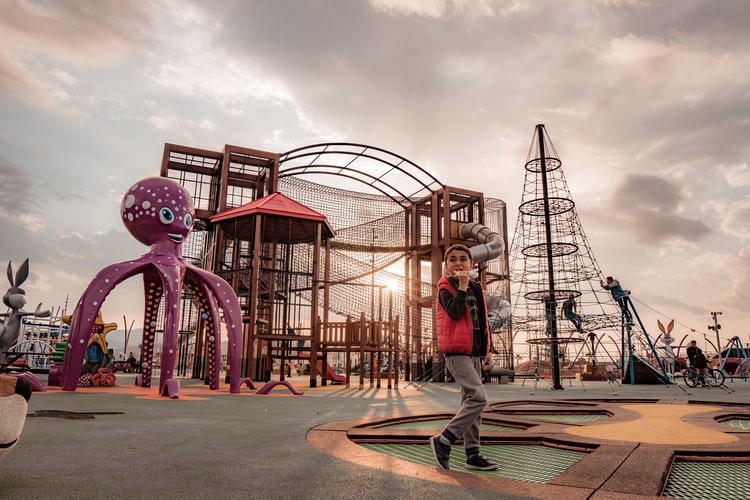
For children, every play session is an opportunity for learning.
This is something that was widely recognized last year, with many calling for a ‘golden age of play’ when the kids of America inevitably went back to school. It is an outlet for expression, nurturing abilities they posses already whilst gradually phasing in new ones. Therefore, the playground is the perfect backdrop for all these varying developments.
How do these settings facilitate your child’s learning? Read on after the jump to find out.
Developing Social Skills
When kids gather in a playground, they will invariably begin to interact with one another.
Whether they build friendships or experience dealing with a few difficult characters, they will develop their social skills. They may begin to contemplate lines of enquiry like:
- Where can I find common ground with others?
- Which types of people should I steer clear from?
- How do people respond to my behavior?
- What slang or speech patterns make me seem cool with my friends?
Their answers to these questions will understandably be elementary, but they are the building blocks to a stronger understanding. Unfortunately, the coronavirus pandemic has left many children feeling anxious and isolated in their homes, so there is also the consideration that public playgrounds for kids are needed more sorely than ever today. Social stimulation is integral for the wellbeing of all, and your children can be their truest, happiest selves in these types of environments.
Teaching Recycled Construction
Even the way some parks are built can present a worthwhile learning curve.
The commercial playground equipment from BigToys is exemplary of this, helping to preserve the environment and foster imaginations equally. They answer one of their most frequently asked questions, “What Makes BigToys Green?”, with an explanation that they use conditioned woods and recycled metals and plastics to build their playgrounds. Kids often take one thing and imagine it as another, and a compatible philosophy has been applied here with great results.
This means that the children playing in these environments can respect the space too. After all, the teens of today are becoming more environmentally conscious by their own merit, so if these types of ideas can be introduced early through the playground, even more positive change in future generations can be assured.
Expanding Cognitive Capabilities
While on the surface it might seem like the playground is just a simple way to have fun, it is a framework that may encourage more complex forms of thinking in your child.
It has been frequently argued that screens endanger kid’s imaginations, so the only viable solution to this problem is to send them outside into environments where their creativity is boundless. This is what a playground provides in plentiful supply. For example, a themed playground design in a spaceship, pirate ship, or castle may flare their imaginations considerably.
Not only this, but inclusions such as climbing frames may encourage them to problem solve somewhat by intricately coordinating their movements to get higher. Moreover, swings may subtly teach them a little about physics and momentum. In the end, while the features of a park can be fun for kids, they are not included randomly for mindless glee, but for subtle and practical learning opportunities.
